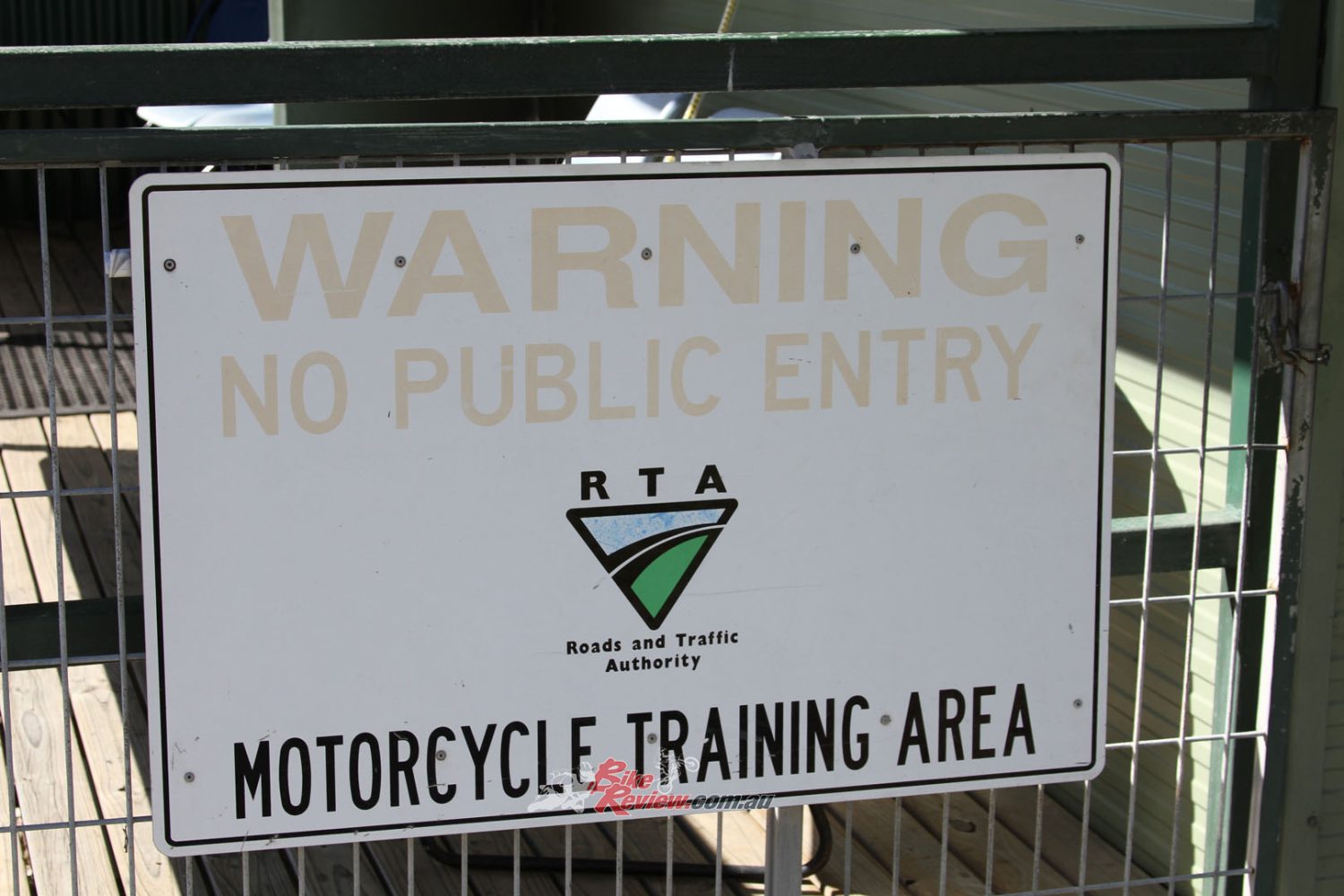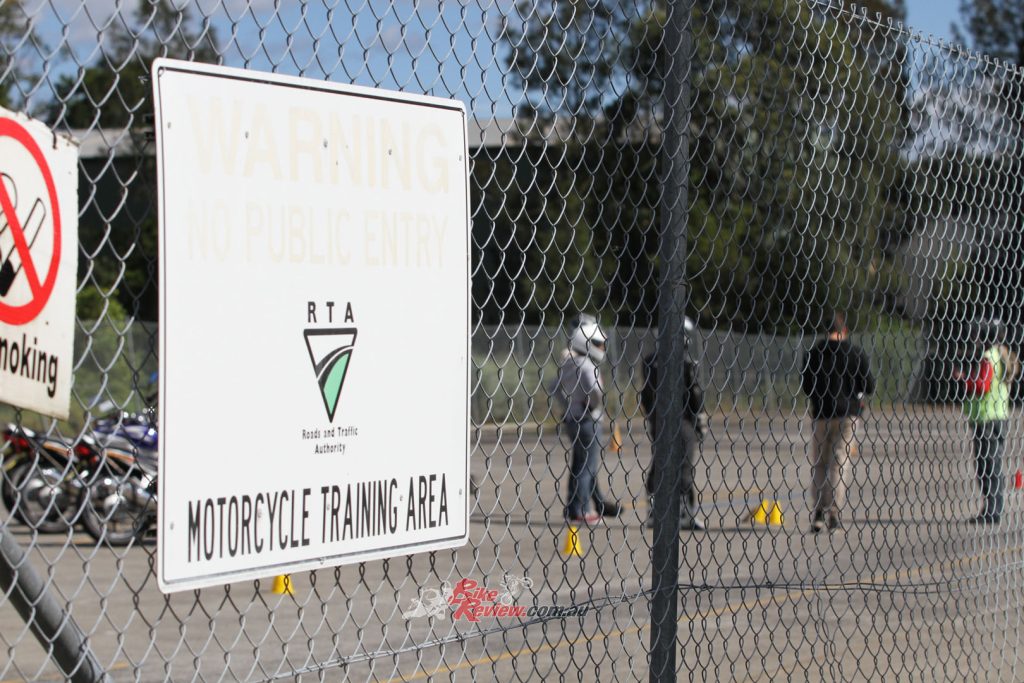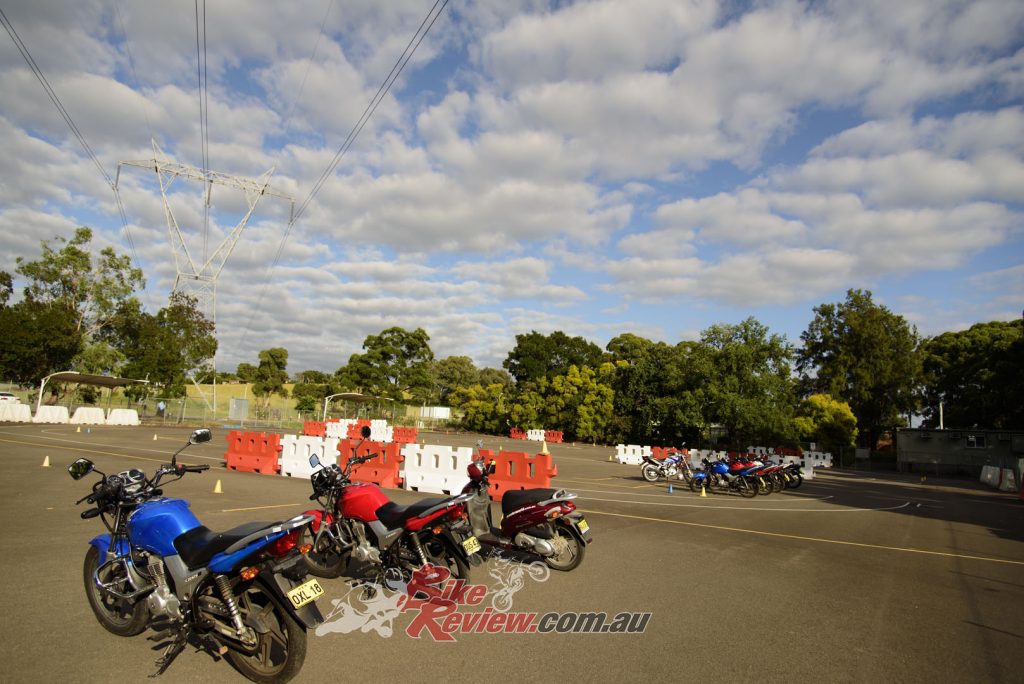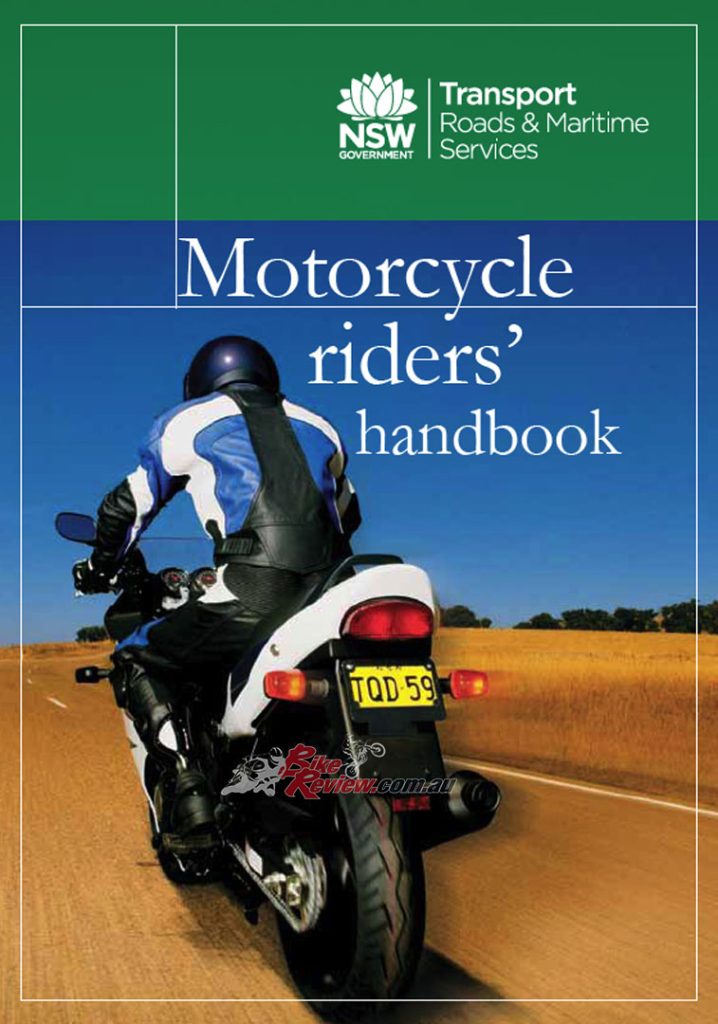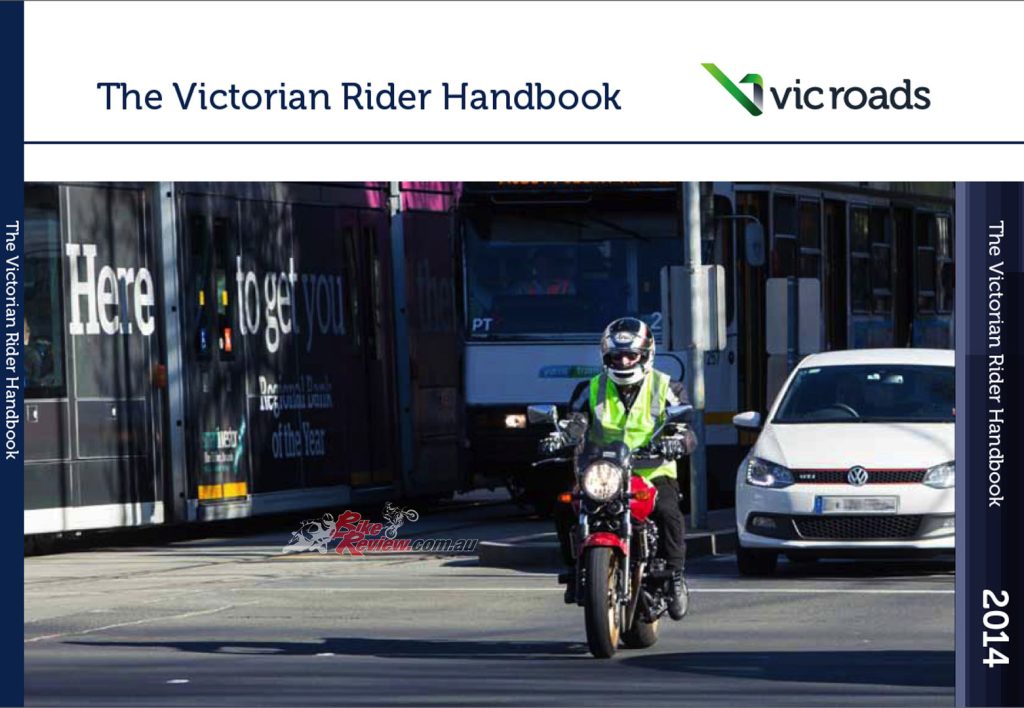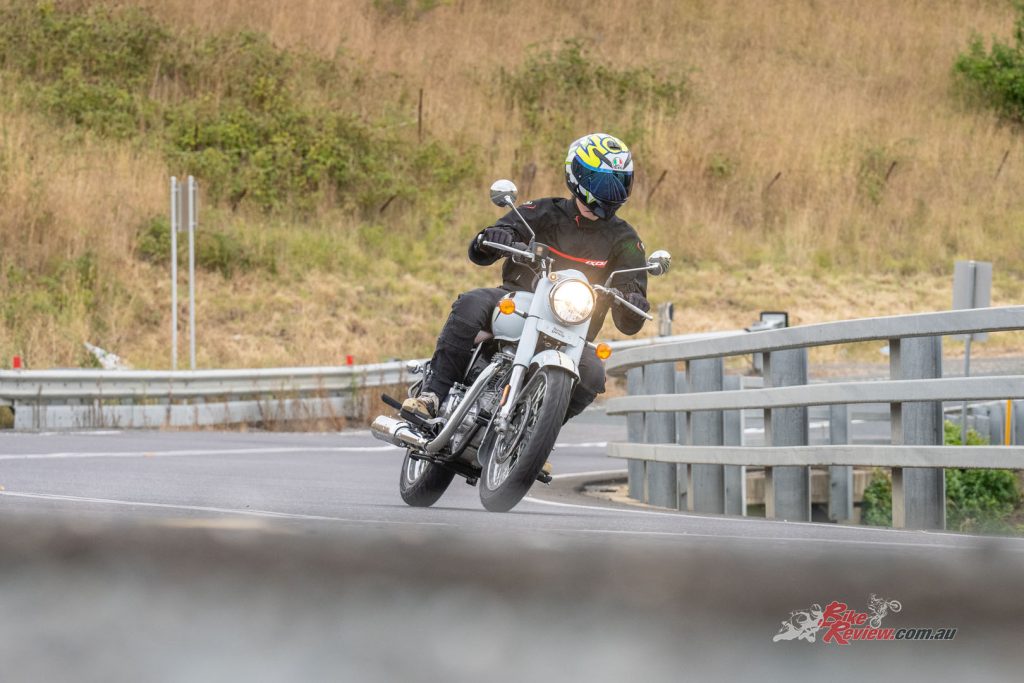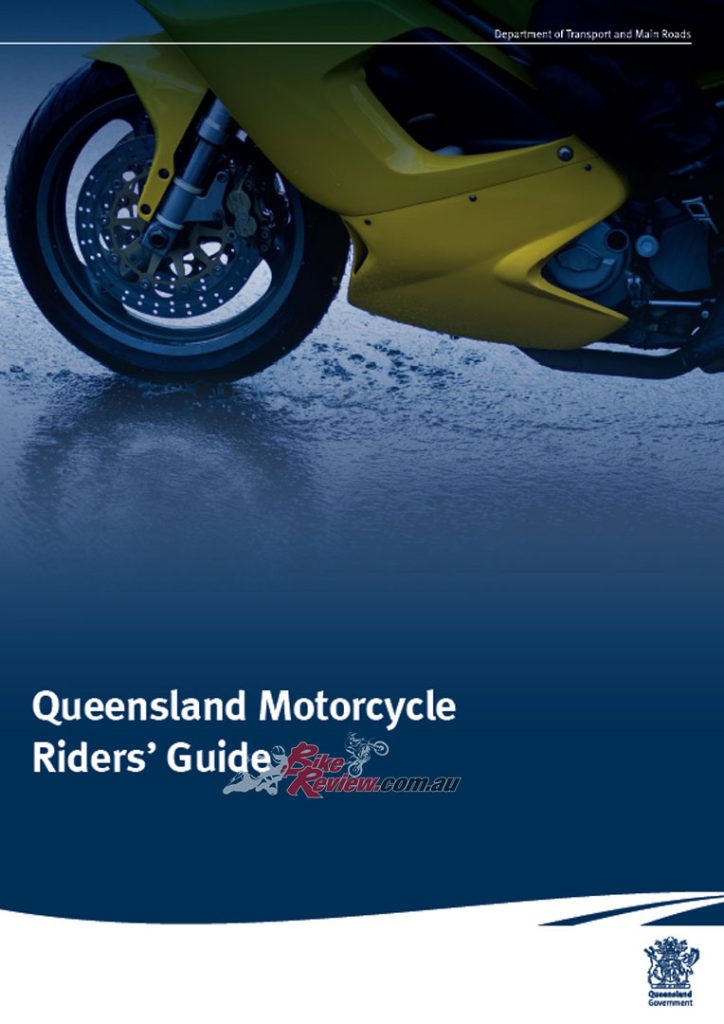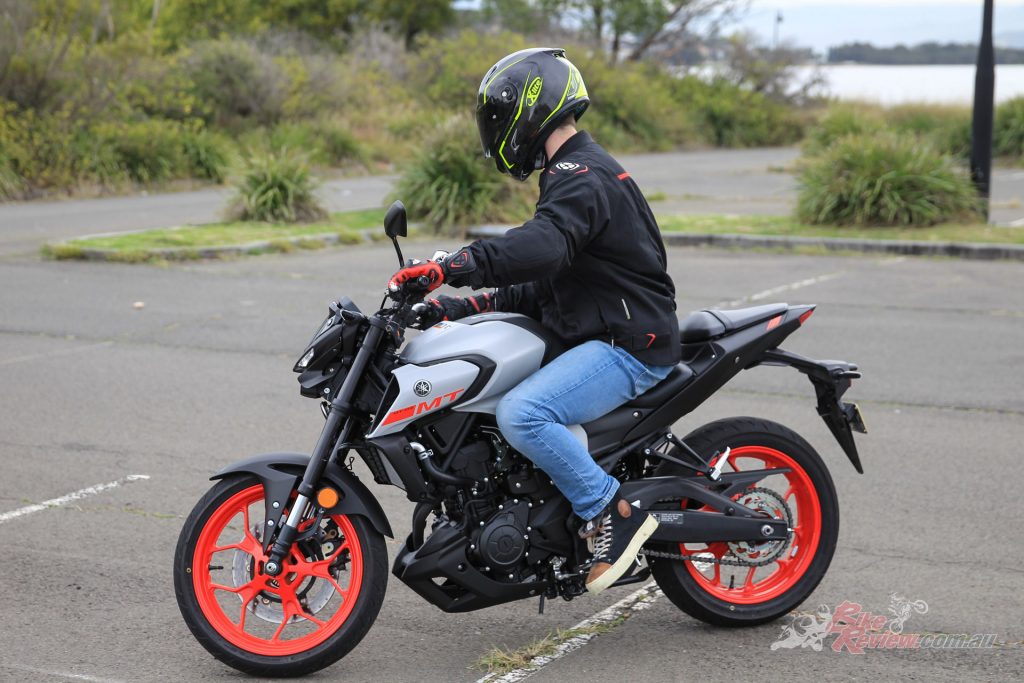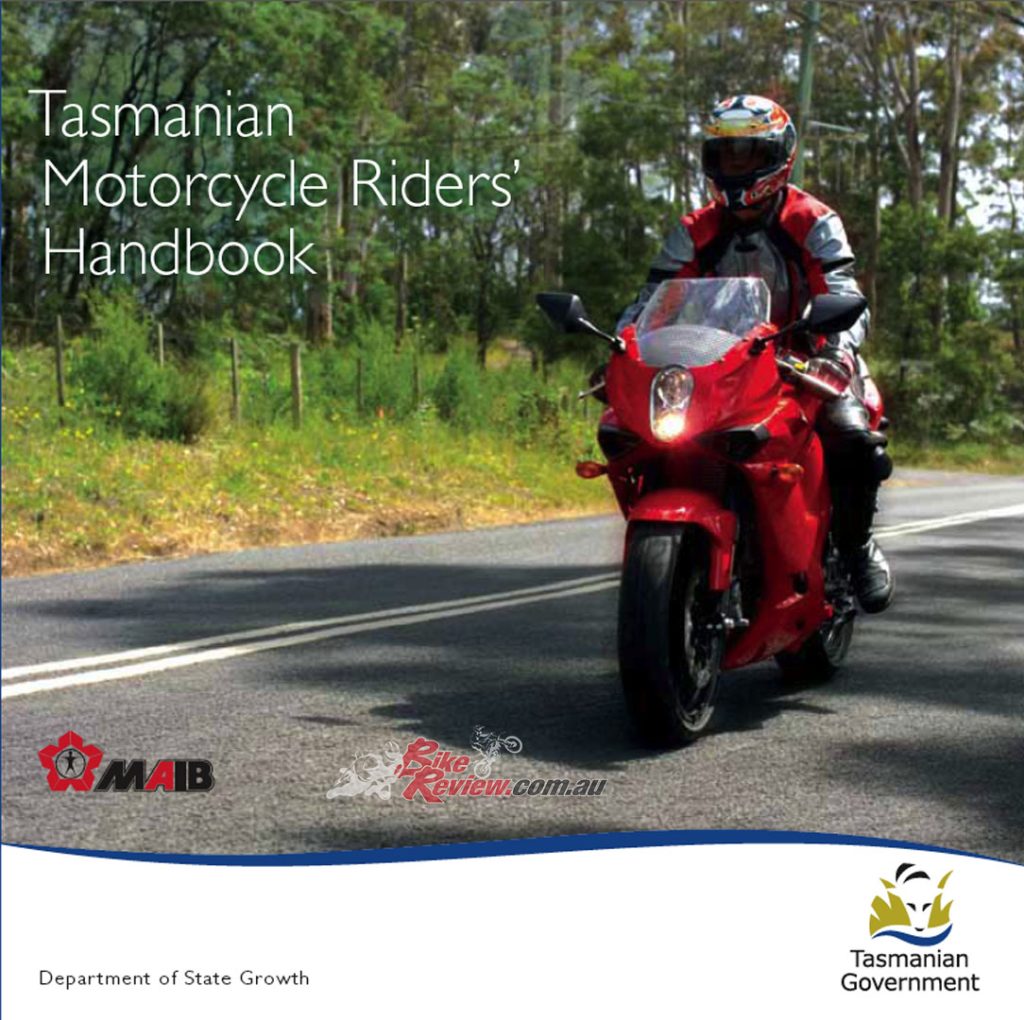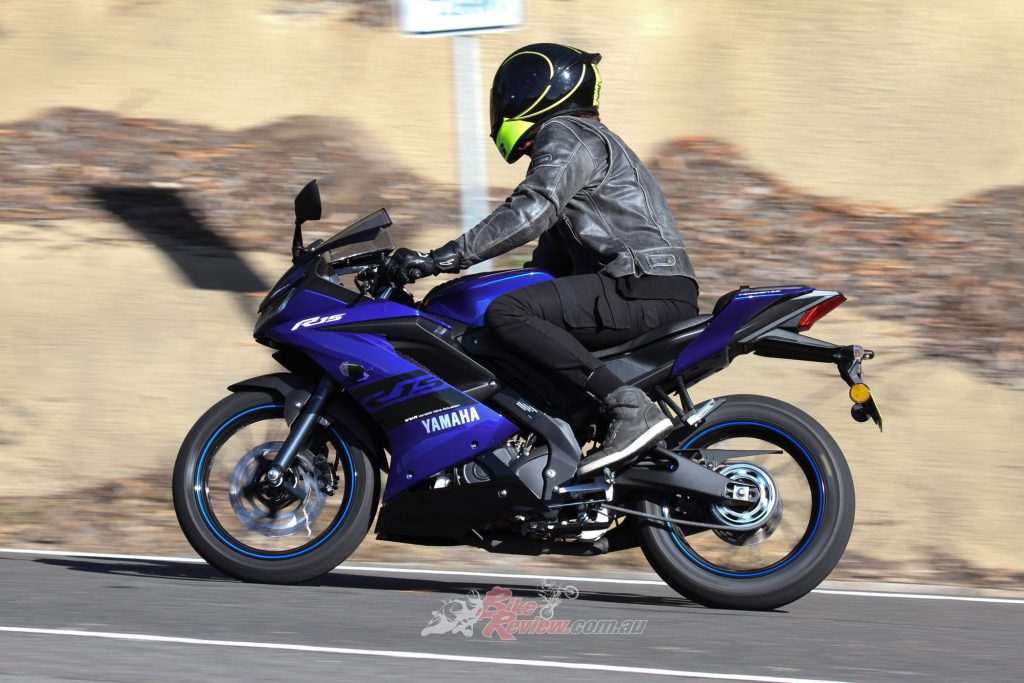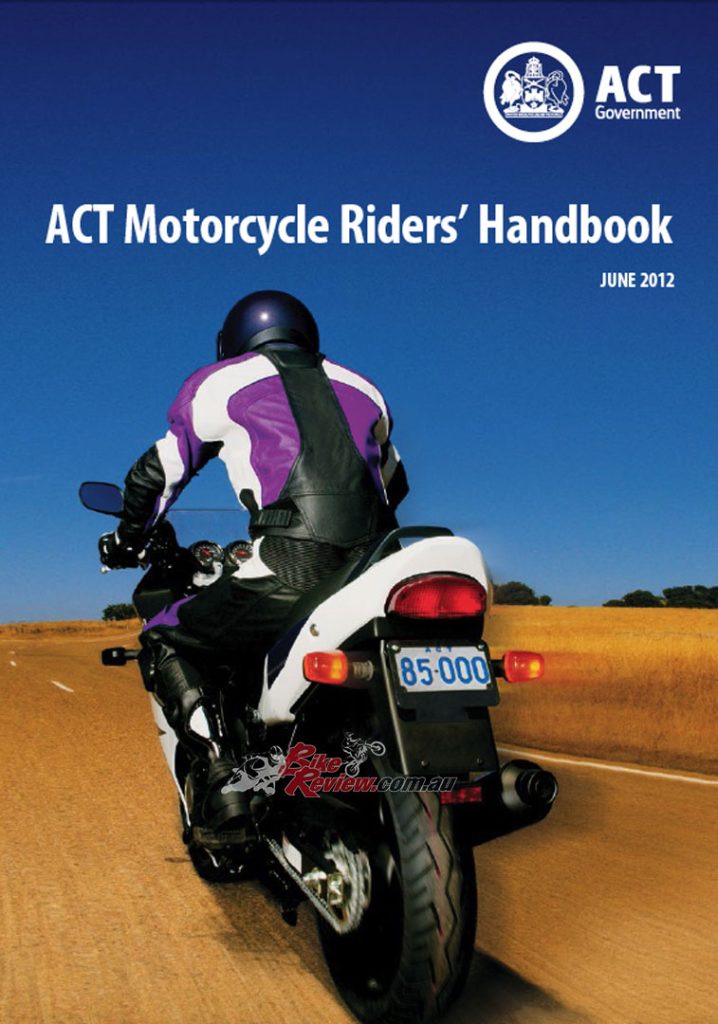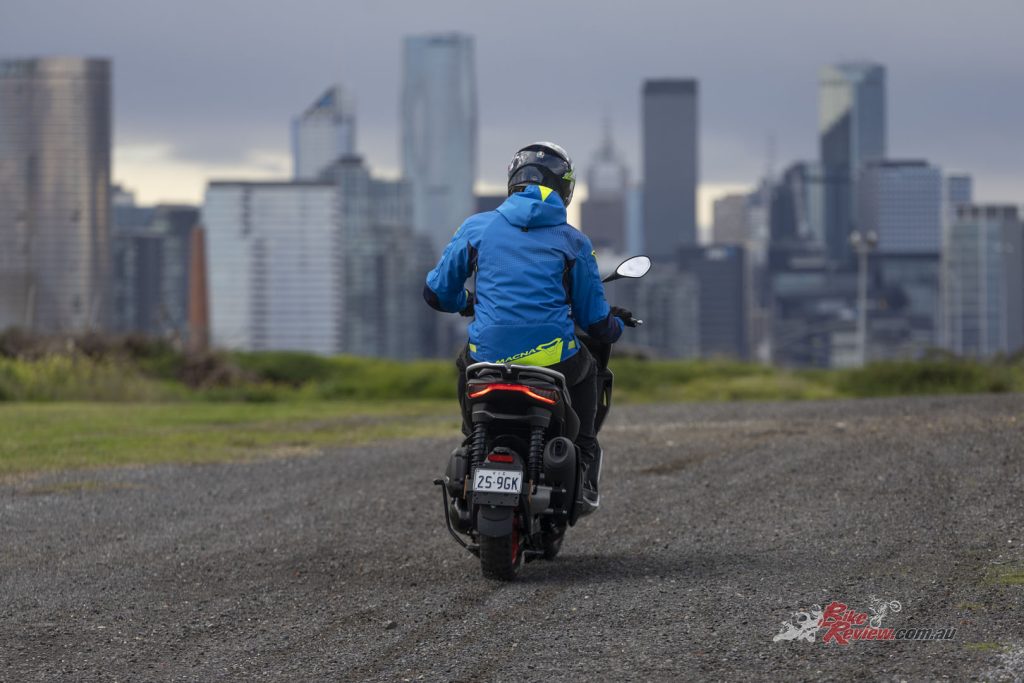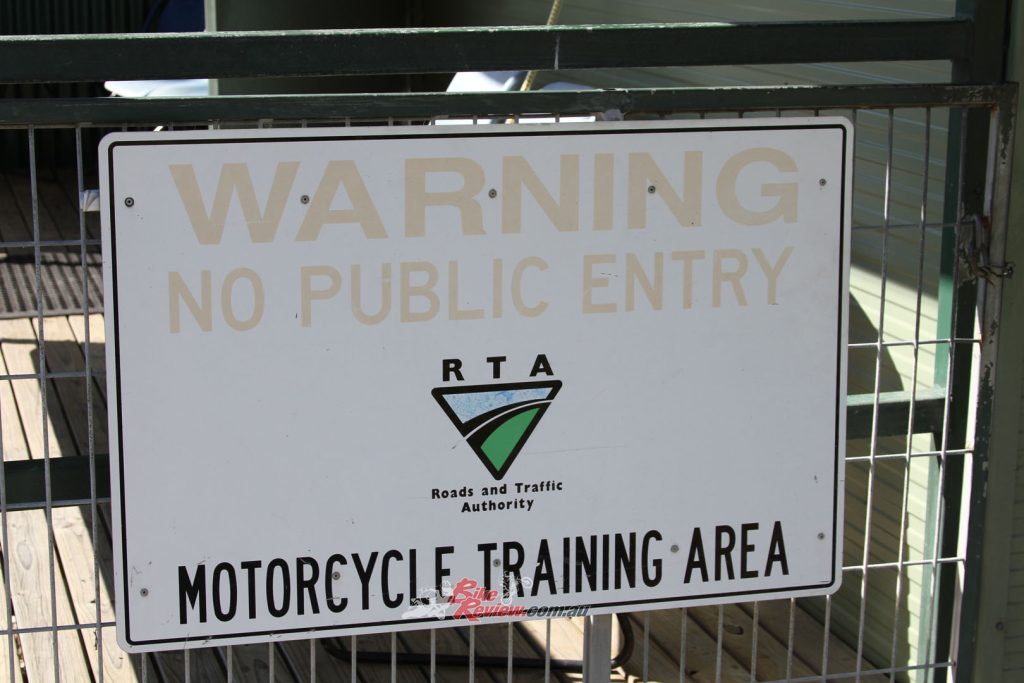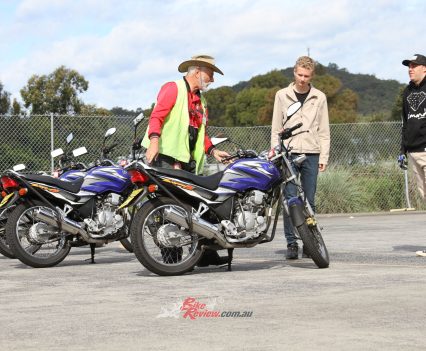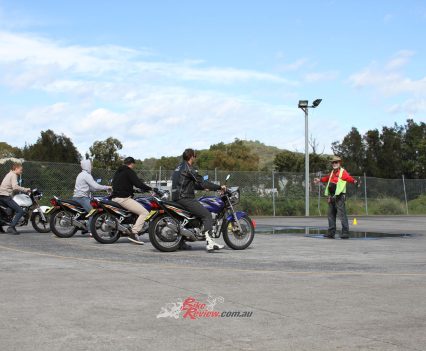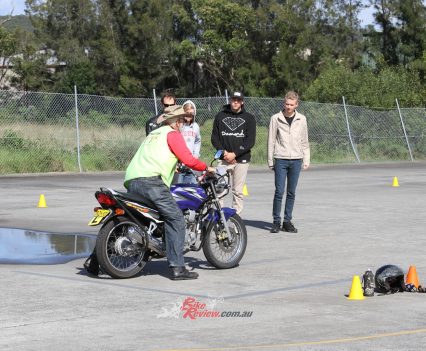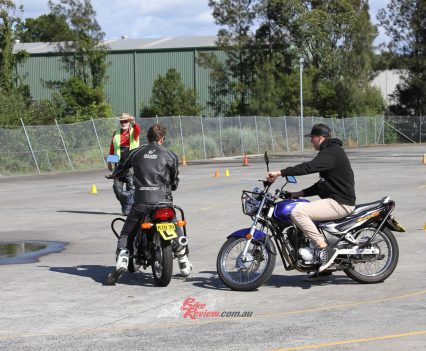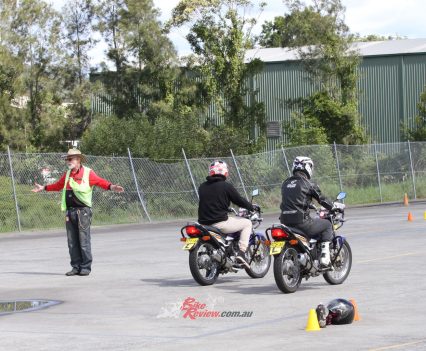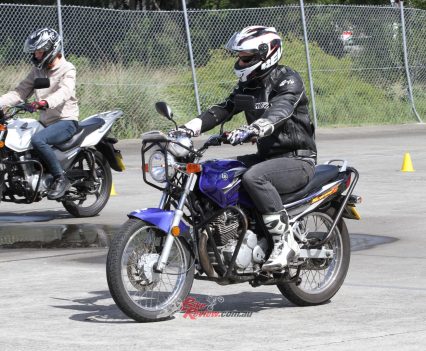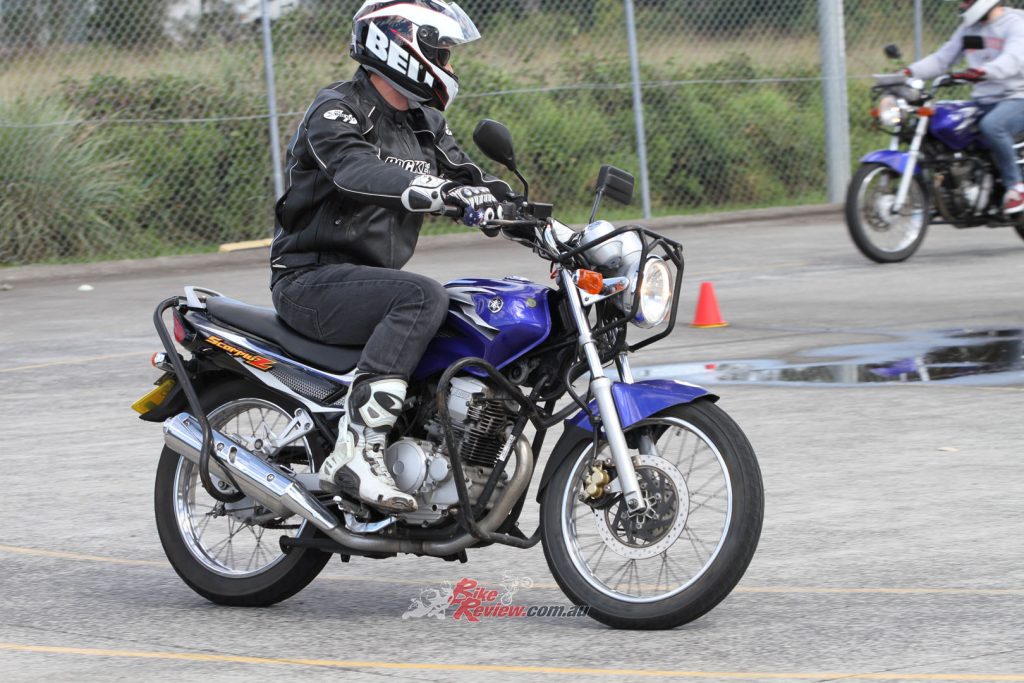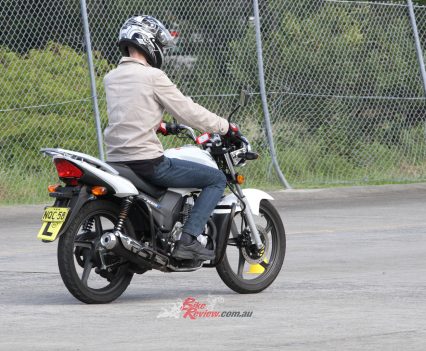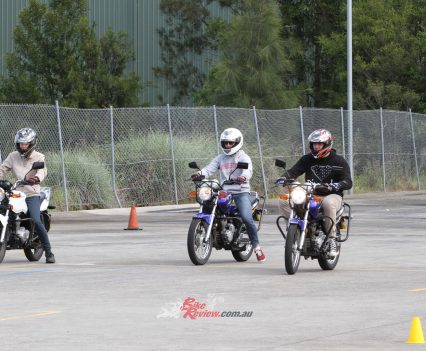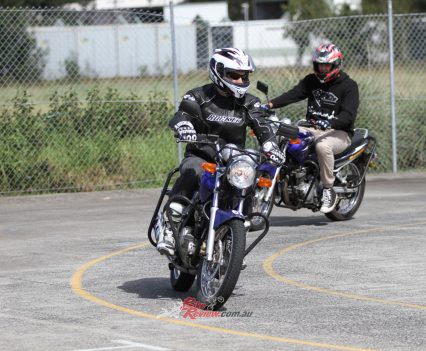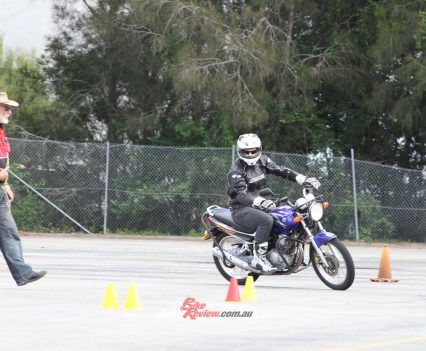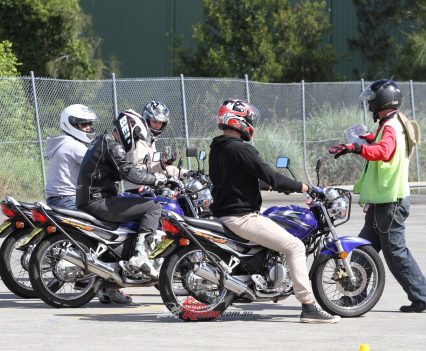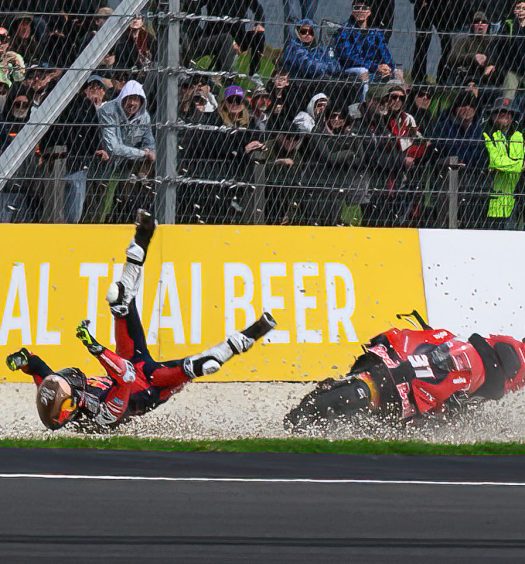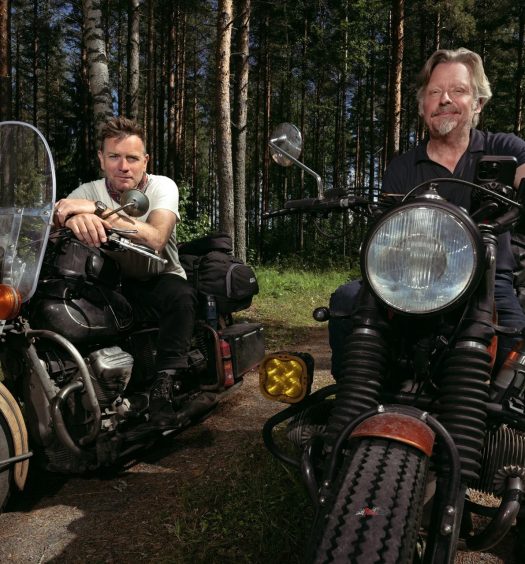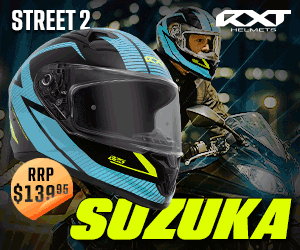With each Aussie state having its own rules and regulations regarding motorcycle licencing, we look at the options around Oz for anyone wanting to get out on the open road...
While the LAMS bike scheme has now been adopted across Australia, licencing requirements vary a little more, with the process of obtaining your Learners Permit and Provisional Licence varying state to state. Check out our state-by-state guide.
Already got your L’s? Check out our tips on how to get your P’s here…
It’s also worth mentioning that the system can vary even within each state depending on a number of factors, such as the rider’s age, where they live, their current licence type and the availability of training nearby. If you are at all unsure about any of the information here, please confirm it with your relevant state road authority, as we’ve made every attempt to keep this as accurate as possible at the time of writing but mistakes do happen and rules do change.
Here’s a list of the state road authorities and their websites:
- NSW – Service NSW
- Victoria – Vic Roads
- Queensland – Department of Transport and Main Roads (TMR)
- South Australia – Department for Infrastructure and Transport
- Northern Territory – Department of Transport
- Tasmania – Transport TAS
- ACT – Access Canberra
You’ll find motorcycle relevant information for gaining your motorcycle licence (with varying degrees of difficulty) by going into licencing, motorcycle licence, or motorcycle learner licence. Some of the sites are particularly difficult to navigate, so you may find it easier to do a Google search for motorcycle licence and the relevant authority to skip all the searching.
Also keep in mind that minimum age requirements apply and also vary by state, with some other restrictions applying, like the need to have held a car licence for a year to go for a Learner Permit for a motorcycle in Queensland.
An interesting fact that is recognised across Australia is that training is an effective method of boosting road safety in conjunction with the graduated licencing scheme, which is why training courses are required to get your motorcycle licence – from an actual expert – where they are available.
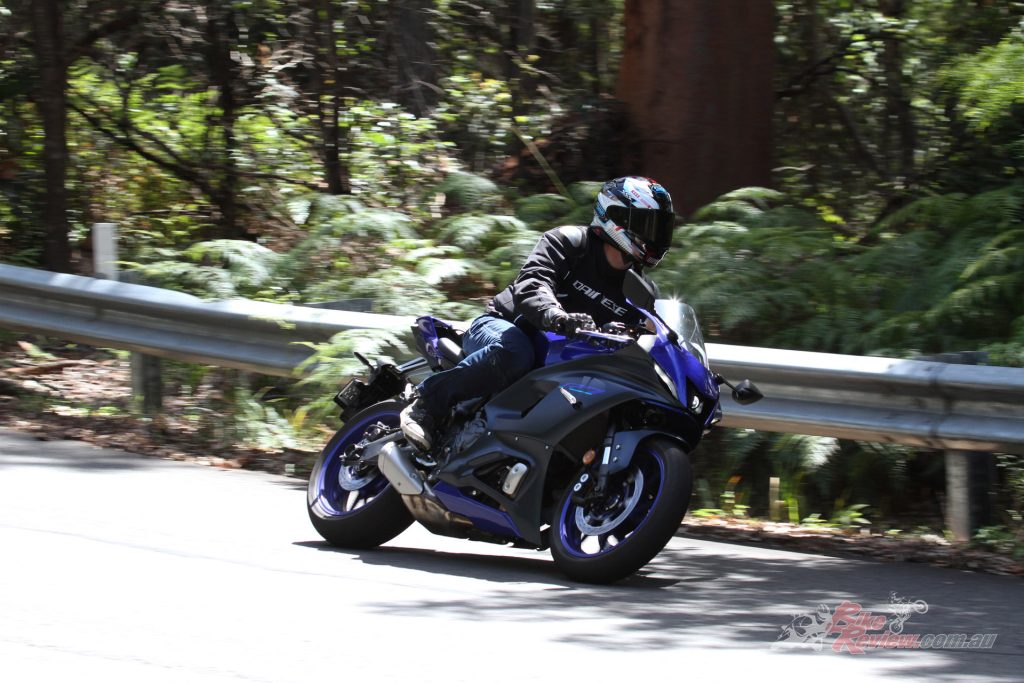
In NSW between 1990 and 2000, the first 10 years in which compulsory training was required for licencing, rider fatalities and injuries dropped by 27 per cent.
In NSW between 1990 and 2000, the first 10 years in which compulsory training was required for licencing, rider fatalities and injuries dropped by 27 per cent, with young riders seeing the greatest improvement in safety but still remaining the most at risk group.
You are also legally required to wear a helmet meeting the appropriate standard – normally (AS1698 or AS/NZ1698) in Australia and have it properly fitted and fastened. Normal road rules also apply, as well as some specific rules for motorcycles, like filtering being made legal in certain circumstances in some states, or road positioning rules. Check for your states specific rules.
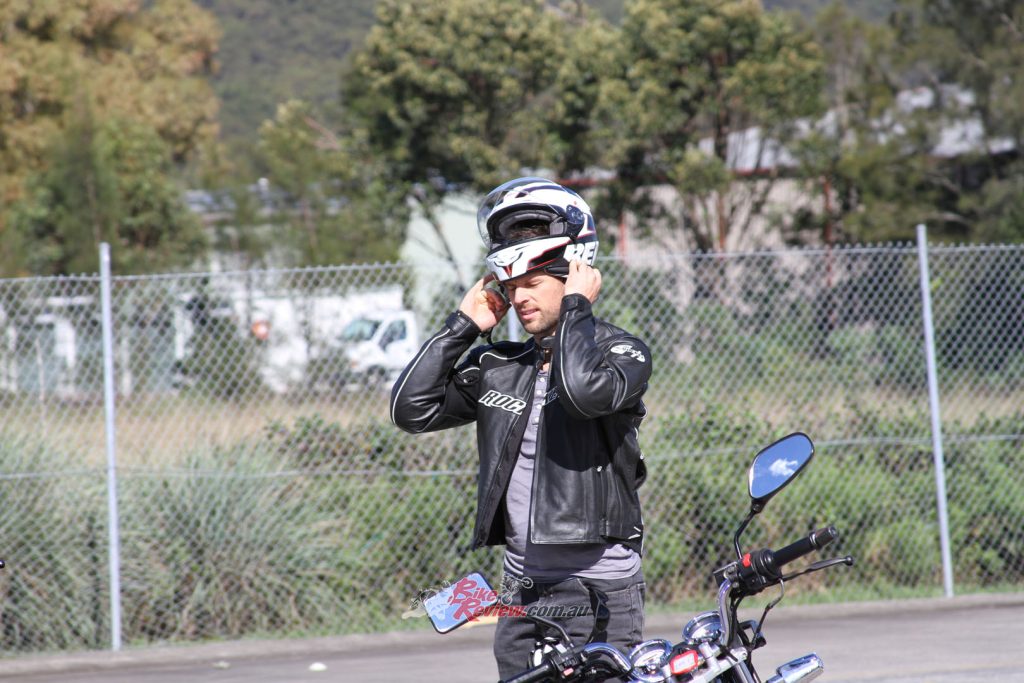
The riding training courses will supply a lid and gloves but its always good to get your own if you’re serious about learning to ride. Grab a riding jacket and riding jeans while you’re at it.
Driving under the influence of drugs is illegal in all states, while a zero tolerance approach to alcohol is in place across all of the learner and most of the probationary licence schemes. With motorcycling requiring far more focus, better reflexes and unimpaired judgement, especially when learning it is a restriction put in place to help rider safety. There are plenty of fully licensed riders who simply won’t drink when riding, for good reason.
We also highly recommend ensuring you have appropriate gear for your own safety and comfort. Many of the rider training courses run for licensing will run in any weather, and having a proper set of the appropriate gear will ensure the experience is as fun and easy as possible.
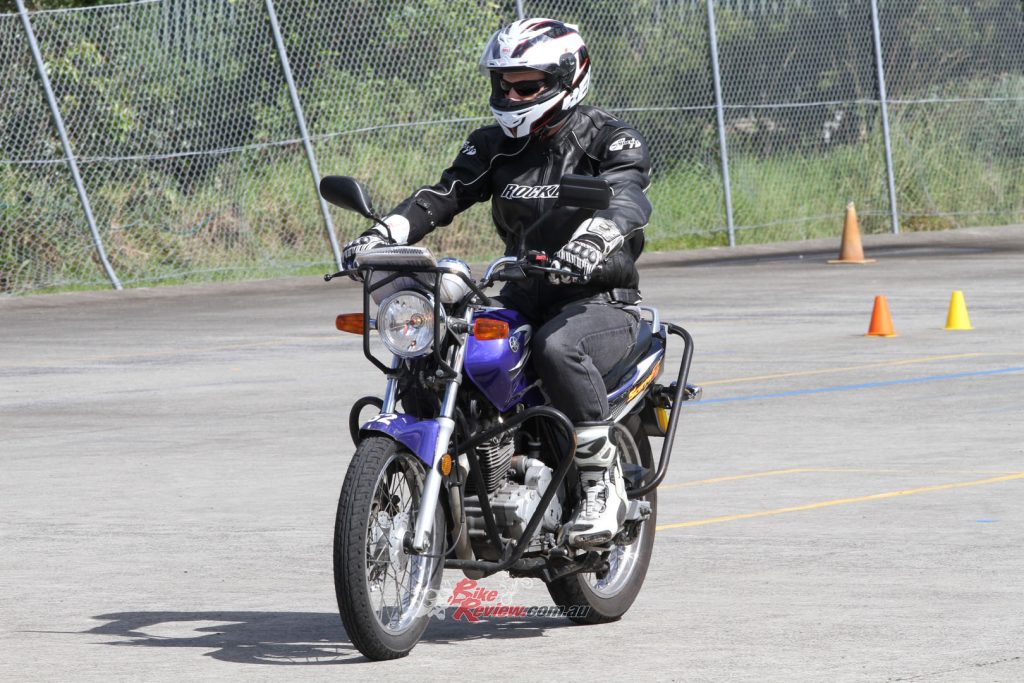
Many of the rider training courses run for licensing will run in any weather, and having a proper set of the appropriate gear will ensure the experience is as fun and easy as possible.
As a minimum a quality helmet that fits properly (see your local motorcycle or accessories store staff for help), a textile or leather jacket, carbon-fibre or similar reinforced jeans, motorcycle specific gloves (with reinforced palms and fingers) and motorcycle boots are all a good investment.
Helmets are mandatory and your hands are the most likely area to take serious damage even in a minor stack. Kelvar or equivalent jeans will help keep your skin on, while a good jacket whether leather or textile will normally incorporate armour of the shoulders, elbows and back, and can help protect from the elements.
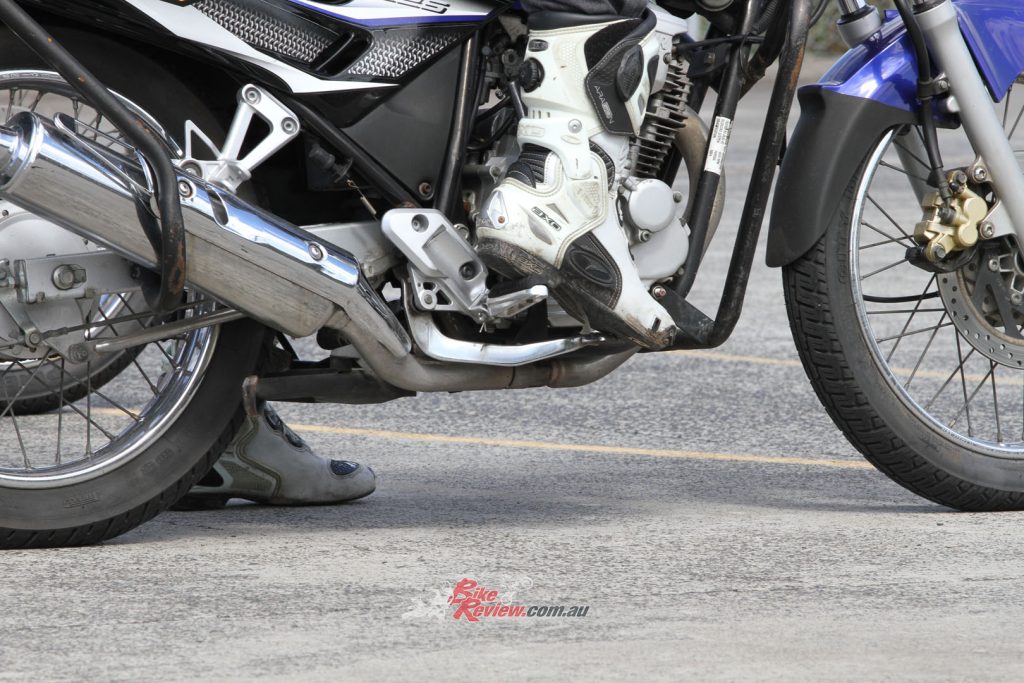
Motorcycle boots are also a good idea as they are designed not to effect your ability to use foot controls.
Motorcycle boots are also a good idea as they are designed not to effect your ability to use foot controls. Regular boots can work but on many bikes reduce feeling of the foot brake control, or can be difficult to efficiently work the gear shifter with. Also check with the state specific motorcycle handbooks or guides. They are available from the state websites to download for free.
NSW
In NSW you’ll need to be 16 and nine months old to start the process of getting a motorcycle licence, with the Graduated Licensing Scheme and compulsory training adopted in an effort to improve safety.
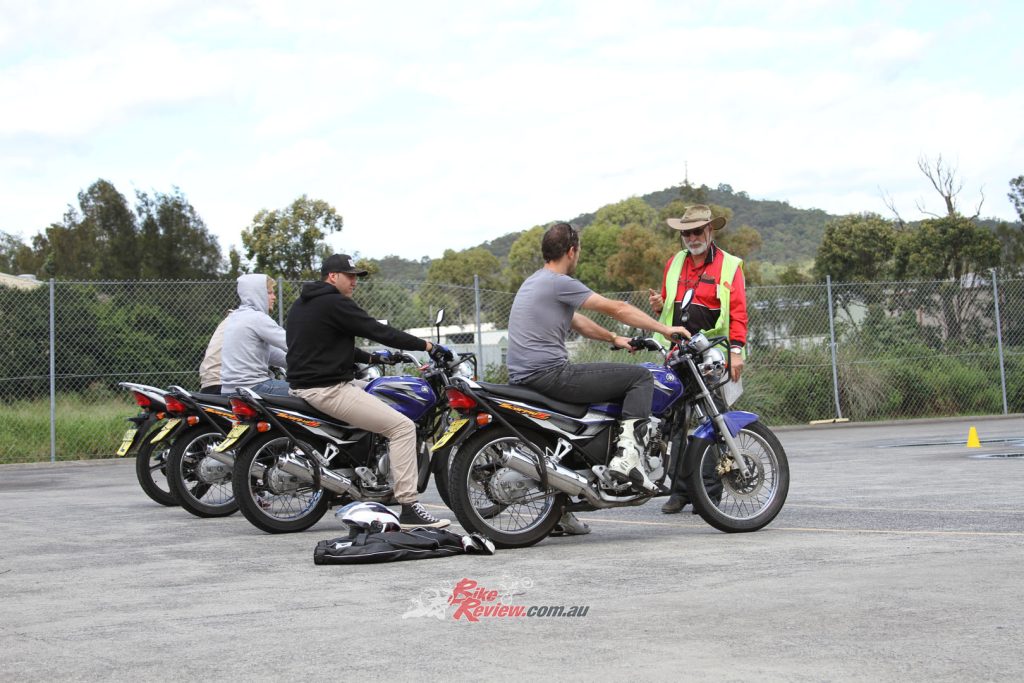
In NSW, the learner course consists of two 3.5 hour days. Theory and practical learning is on the list…
The first step is booking into a pre-learner training, which takes place over two consecutive days, with two 3.5-hour sessions and is subsidised and relatively cheap as a result. In areas where training is not available a Motorcycle Operator Skill Test (MOST) is required in its stead.
Looking for a LAMs bike? Check out our LAMs reviews here…
The two-day course covers motorcycling basics (including scooters) and is competency based, meaning you pass or fail. A motorcycle, helmet and gloves are provided, but if you are serious about getting a motorcycle or scooter, bringing your own gear will ensure a more comfortable experience!
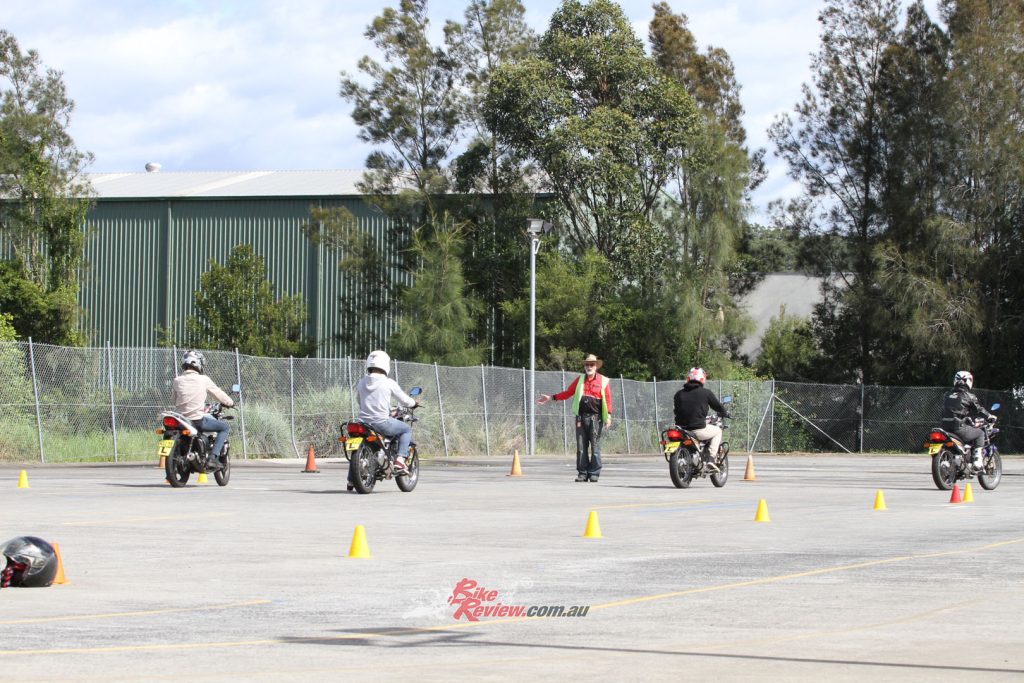
The two-day course covers motorcycling basics (including scooters) and is competency based, meaning you pass or fail.
Upon a pass, you’ll receive a certificate that is valid for three-months allowing you to do a rider knowledge test at your local RMS and receive a Learner’s Permit for the licence fee. On a Learner’s Permit you are able to ride on your own but must a display an L plate and follow the regular restrictions for a Learner’s Permit, like zero blood alcohol concentration, a 90km/h speed limit, no pillion passengers, always wearing an approved helmet and of course ride a LAMS approved motorcycle.
Keep in mind your Ls will last for 12-months but once they expired if you haven’t already transitioned onto a Provisional licence you’ll need to start over, including the Pre-Learner course! To move on to your Provisional Licence, you’ll need to complete the pre-provisional course after being on your Ls for three months, on your own motorcycle, or hire one out if available. The pre-provisional course is done over one full day, including a six-hour course followed by a road ride to test your proficiencies.
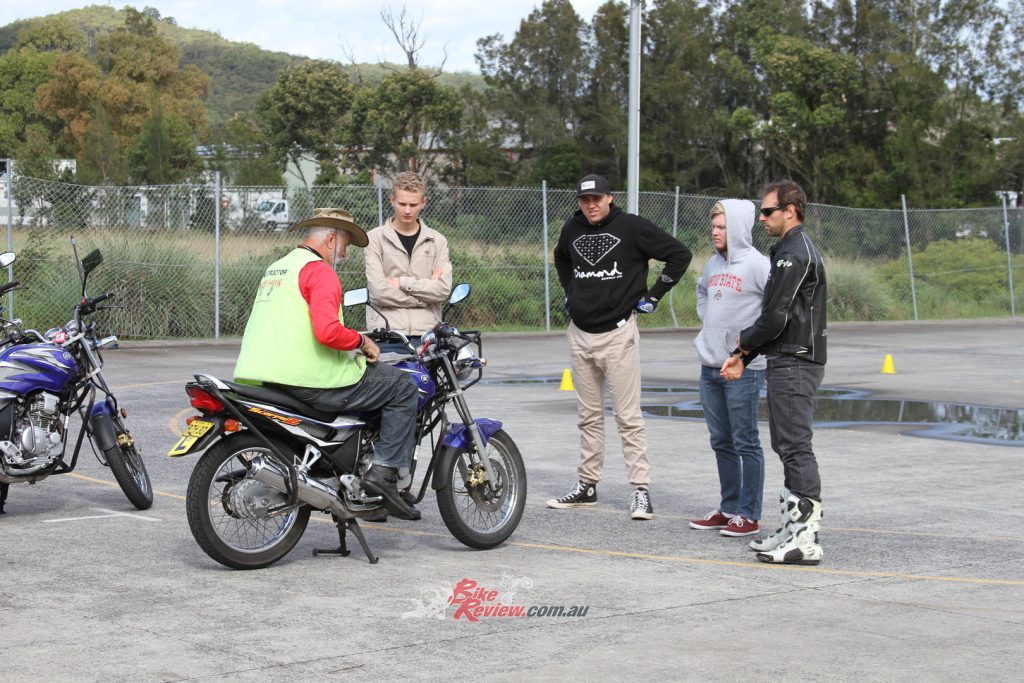
If you’re over 25 and already hold a full car licence you may be able to go straight to a full riding licence after 12-months on your red Ps, otherwise you’ll need to wait two years to apply.
Then it’s a matter of taking your certificate to the RMS and paying the licence fee. An eyesight test may be required. You’ll need to display your red P plate for the duration and follow the same rules as apply to Ls. After a further 12 months you can apply for P2s (green Ps), which allows you to travel at up to 100km/h where the limit allows, as well as to carry a pillion.
If you’re over 25 and already hold a full car licence you may be able to go straight to a full riding licence after 12-months on your red Ps, otherwise you’ll need to wait two years to apply. Also keep in mind that during your provisional licence period, while you do have demerit points, speeding offences have a minimum three-month suspension.
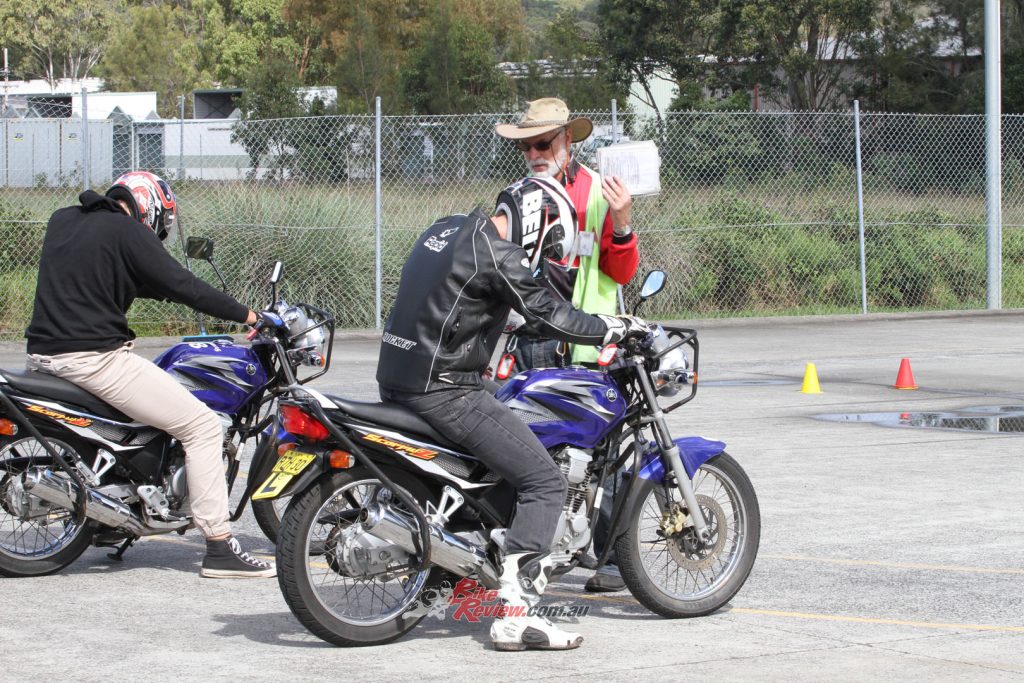
Also remember if you to your pre-learner course on an automatic bike (generally a scooter) you’ll need to stick with an automatic until you get your green Ps.
Also remember if you to your pre-learner course on an automatic bike (generally a scooter) you’ll need to stick with an automatic until you get your green Ps. To search for accredited training providers for pre-learner and pre-provisional riding courses visit the Service NSW website.
VICTORIA
To gain your learner’s permit you’ll need to be 18 years-of-age and pass both a Car Learner Permit Knowledge Test as well as a Motorcycle Learner Permit Knowledge Test, and a Riding Skill Test and eyesight test. The car knowledge test isn’t required if you already have a car permit or licence.
The Riding Skill Test can be undertaken at an accredited training and testing provider and your learners permit will be valid for 15 months and cannot be renewed, so you’ll need to apply for your licence within this period, or do the pre-learner course and tests again.
Learner restrictions include a visible L plate, LAMS only bikes, no pillions, zero BAC, headlight on at all times, wearing a high visibility vest or jacket, no mobile phone use and riding an automatic motorcycle if that’s what you did your test on.
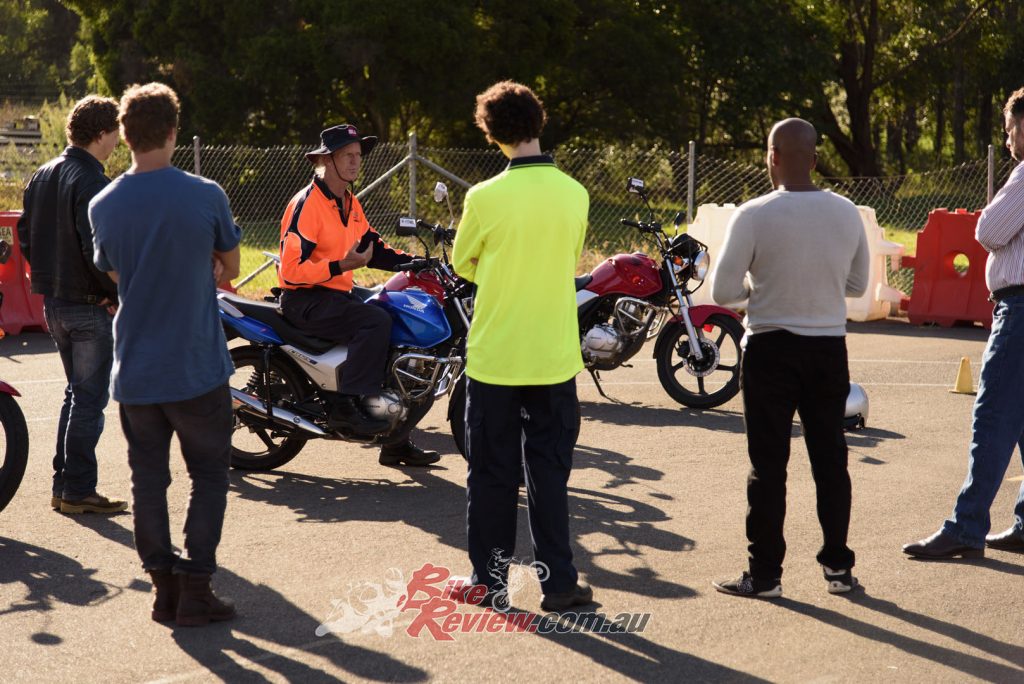
One of the biggest differences between the NSW and VIC LAMs restrictions is the fact you have to wear a high vis vest if you’re on your L’s in VIC.
Your licence type will depend on your currently held car licence type. For those without a drivers licence and under 21, you’ll have a four year probationary period, with the first year a P1 probationary period, followed by three years on P2s. For those over 21 you’ll move directly to the three-year P2 probationary period.
If you do have a licence you’ll have the motorcycle category added to it, however you’ll have a restricted licence as mentioned above, which means having to use a LAMS bike for the full three years, zero BAC and no pillions.
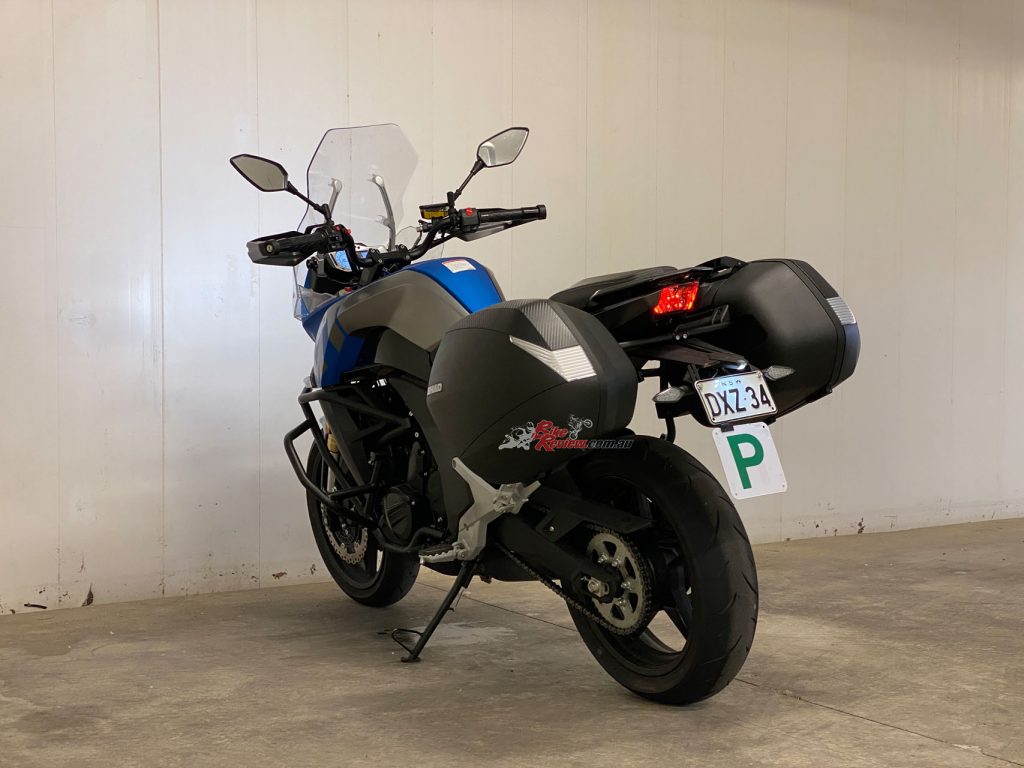
Make sure you always display our P or L plates. Here in NSW, you’ll cop a demerit point fine without them.
If you already hold a probationary licence you’ll have the rider category added to your licence, with the motorcycle probationary period ending at the same time as that of your car licence. Probationary riders need to display P plates. From how we’ve read it this basically means that the probationary and restricted periods operate on entirely separate timelines, which seems a bit confusing.
QUEENSLAND
In Queensland in order to apply for a learner motorcycle licence you’ll need to have held a provisional, probationary or open car licence for a year, to ensure you have the road experience necessary to ride. You’ll then need to take a motorcycle knowledge test as well as be medically fit and pay for the test to have the RE learner class added to your driver licence. As an RE learner you’ll need to be accompanied by a supervisor (who has held an open licence for a year or more) at all times, as well as display an L plate.
In order to progress on from your RE learner to RE provisional or open licence, you’ll need to complete a Q-Ride training program, or if you live far enough from the closest Q-Ride training centre you can instead take a Q-SAFE practical riding test. Keep in mind you’ll need to have held your RE learner licence for six months to take the Q-SAFE test, unlike the Q-Ride training, which can be undertaken straight away and is probably the more ideal solution if you don’t have anyone to supervise you.
Once you’ve completed the Q-Ride course you can take your certificate to a transport and motoring customer service centre to upgrade your licence. It is free unless you are also renewing your licence. For Q-SAFE you just need to visit the motoring service centre where you booked the practical test.
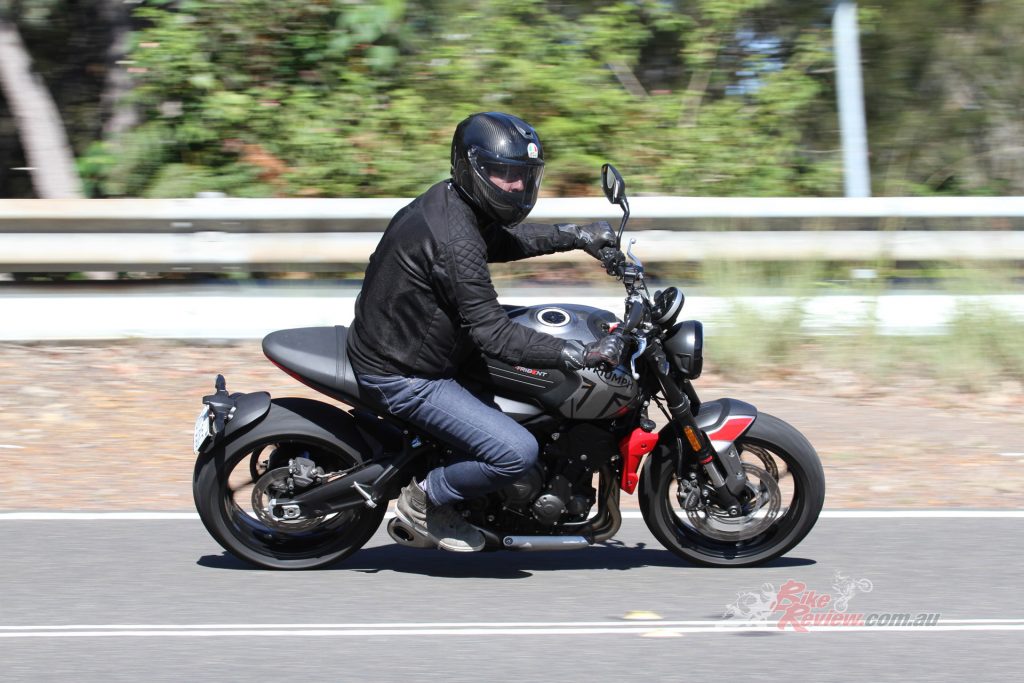
In Queensland in order to apply for a learner motorcycle licence you’ll need to have held a provisional, probationary or open car licence for a year, to ensure you have the road experience necessary to ride.
Keep in mind you’ll still need to display the appropriate red or green P plate, depending on if you’ve got a P1 or P2 (car) licence. You can’t carry a pillion until you’ve held a provisional or open licence for a year, and a zero blood alcohol concentration limit is imposed for the same period. After having held a RE provisional or open motorcycle licence for a year you can also learn to ride an R class (unlimited) motorcycle and will need to undergo another Q-Ride or Q-SAFE course or test.
The competency declaration you receive will last for a full year, but after this period you’ll need to undergo Q-Ride again to apply for the next class of licence. To search for your nearest Q-Ride training provider you can use the Queensland Government website, looking up your post code. The Queensland Motorcycle Rider’s Guide is also well worth downloading.
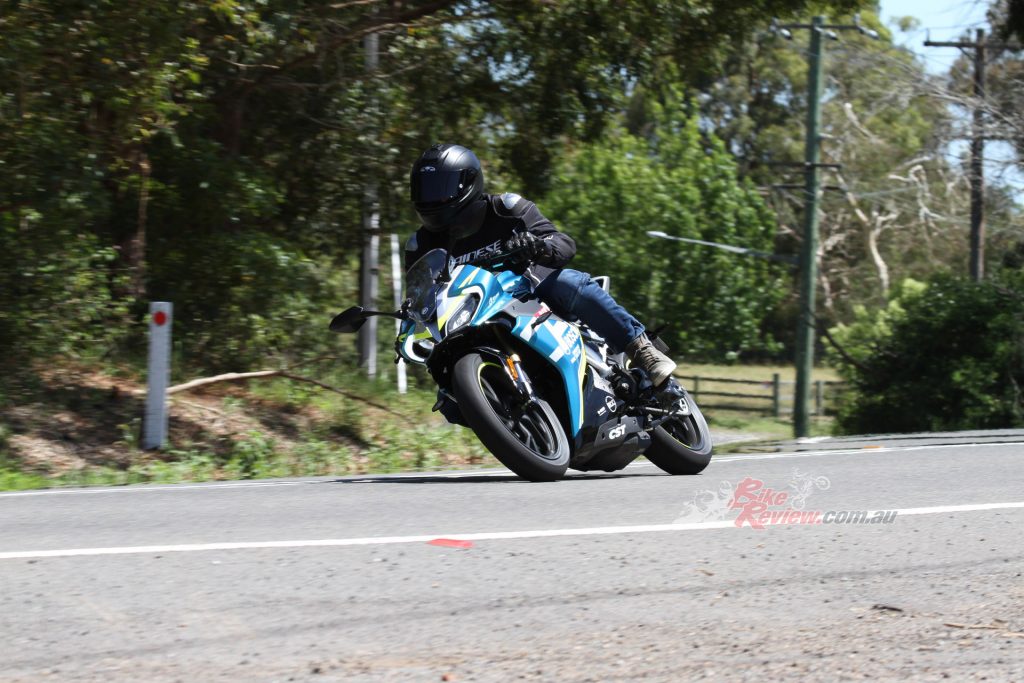
The system for gaining your motorcycle licence in South Australia is relatively simple compared to the other states.
SOUTH AUSTRALIA
You’ll need to be at least 16-years-of-age and pass both a theory test as well as complete a RiderSafe basic training course. The level one (basic) course costs $375.00 and you won’t be able to ride your own motorcycle. One will be provided, as well as a helmet, while appropriate gear such as a long sleeved top, full-length pants and enclosed shoes are required. Your own helmet if you prefer can also be worn. A learner’s permit also costs $57.00.
Your learner’s permit will last for two years in which time you’ll need to complete the RiderSafe advanced course to progress onto your R-Date class licence.
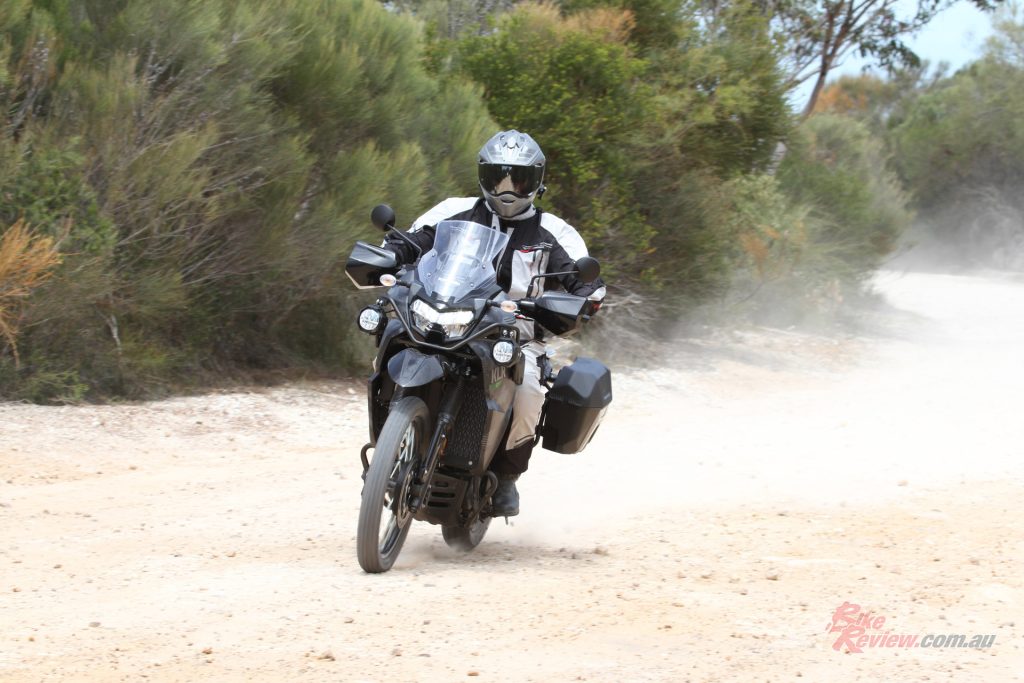
Your learner’s permit will last for two years in which time you’ll need to complete the RiderSafe advanced course to progress onto your R-Date class licence.
As a motorcycle learner the zero alcohol limit applies, you must not ride over 100km/h and must not exceed the speed limit by more than 10km/h. You also can’t take a pillion, and must hold the learners permit for 12 months unless you are over 25 in which case the minimum period is six months. If you are under 25 and do not hold a full or P2 licence of another class you must not ride between midnight and 5am, unless accompanied by a supervisor or covered under exemptions (check the mylicence.sa.gov.au website for further information on exemptions).
For the advanced course you can bring your own (LAMS) motorcycle, but a helmet and bike can be provided and the course costs $334.00. Appropriate gear is required. Once you’ve completed the RiderSafe advanced course, take your certificate to any Service SA customer service centre to apply for your R-Date licence. You’ll need to be 17 years-of-age and have passed a Hazard Perception Test. R-Date licence holders are restricted to LAMS approved motorcycles.
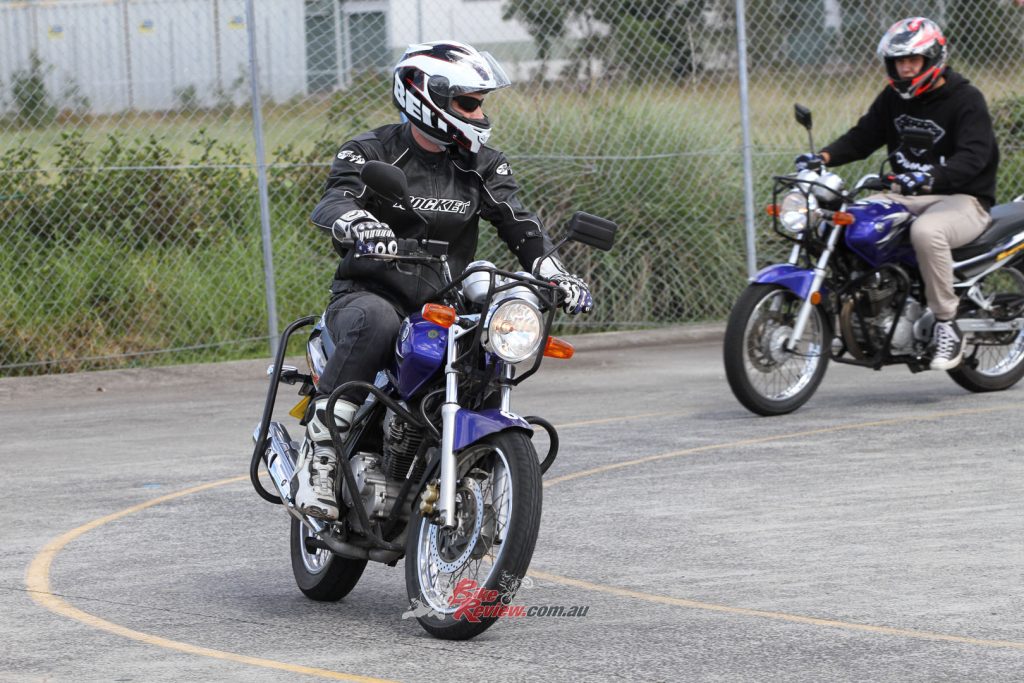
After holding an R-Date licence for 12-months, you can apply for an unrestricted R class licence, which lets you ride any motorcycle until your get your full drivers licence.
After holding an R-Date licence for 12-months, you can apply for an unrestricted R class licence, which lets you ride any motorcycle. You’ll still remain on a provisional licence until you meet the requirements to get your full driver’s licence however. If you don’t apply for the R class licence, you’ll continue to be restricted to riding LAMS approved bikes.
NORTHERN TERRITORY
In Northern Territory you’ll need to be 16 to apply for your learner (restricted rider) licence, and undertake a METAL Basic Riding Course, if available, or a Balance and Stability MOST (Motorcycle Operator Skills Test) as well as a theory test and eyesight test. Your theory test results are valid for a year and your learner licence will last for two years.
Learner restrictions include zero blood alcohol concentration, a max speed of 80km/h, L plates on display on the rear of the motorcycle, no pillions and no mobile phone use unless the bike is parked. To move onto your Restricted Rider’s Licence you need to have held your learner licence for at least six months, and book a practical test at an MVR office or agency, or Police Outstation in remote areas.
Alternatively you can complete both the METAL Basic course as well as the Intermediate course. You’ll need to have held your Learner Licence for at least six months to book into the Intermediate Course. Your Restricted Rider’s Licence R(r) lasts for 12 months but the restriction (r) is automatically removed from your licence record after this period, at which point you can ride any motorcycle.
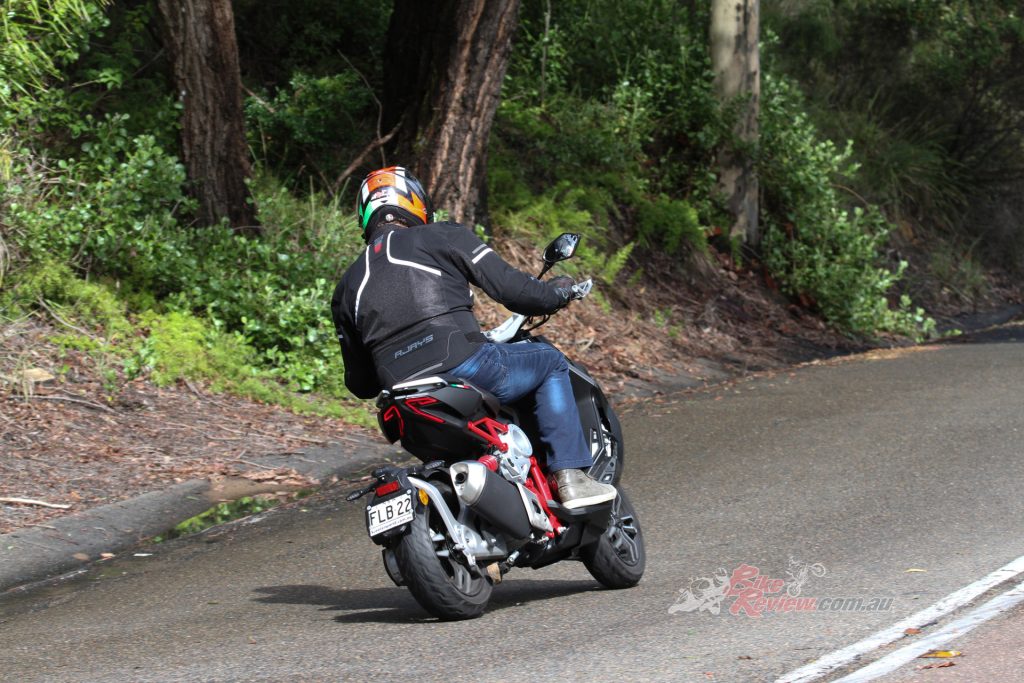
Your Restricted Rider’s Licence R(r) lasts for 12 months but the restriction (r) is automatically removed from your licence record after this period, at which point you can ride any motorcycle.
To take part in the METAL courses you’ll need to be suitably dressed in jeans or similar of ankle length, long sleeved heavy duty shirt/jacket that is fastened at the front and wrists, motorcycle gloves, enclosed shoes and sunglasses for open face helmets. Helmets and motorcycles can be provided for the Basic and Intermediate courses but students may bring their own motorcycles.
More information is available on the transport.nt.gov.au website including contact information about booking METAL courses or finding your local MVR office. Also keep in mind that accumulating five or more demerit points within a 12-month period on a provisional licence will trigger action against your licence in Northern Territory, and provisional licence holders are still restricted to 100km/h.
TASMANIA
In Tasmania, in order to get your motorcycle learner licence you’ll need to complete the pre-learner course, unless you live on Flinders, Cape Barren or King Islands. You’ll also need to be 16 years and five months of age and the course is held over two consecutive half days. Helmets and gloves can be provided, while sturdy footwear and protective clothing providing full skin cover need to be brought and upon successful completion the certificate you’ll receive will be valid for three months.
You’ll need to take your certificate to a Service Tasmania shop and complete a computerised road rules knowledge test and eyesight test to get your learner licence, which will last for a year. Keep in mind that while 16 and five months is old enough to do both the knowledge test and pre-learner course, you must be 16 and six months to get your learner licence.
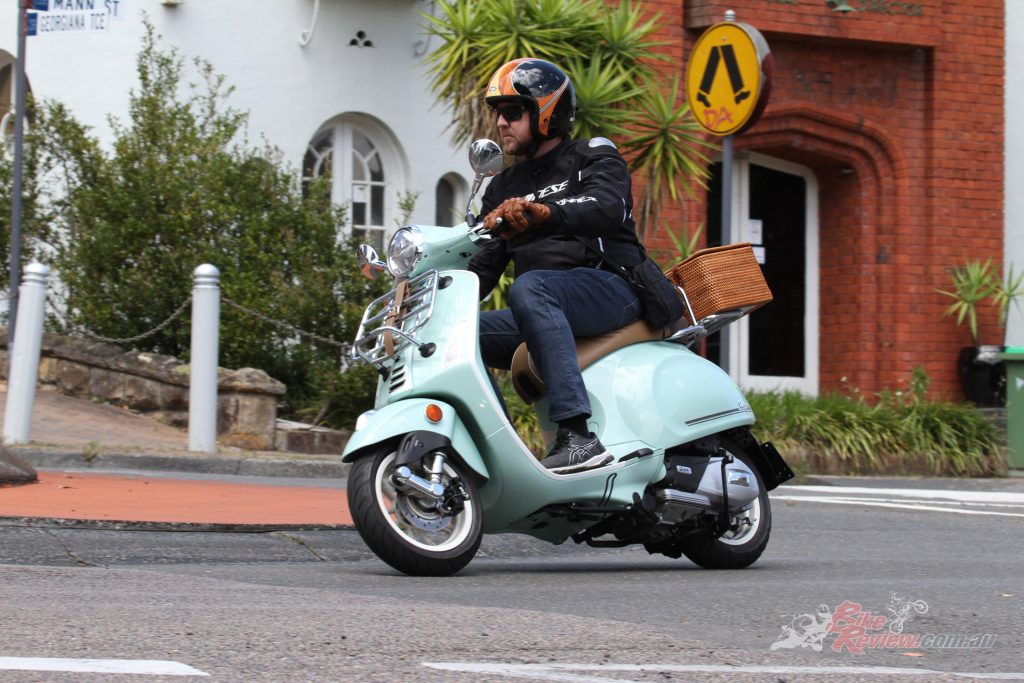
Tasmania also requires you to pass a M.O.S.T course of sorts before you get onto your provisional licence.
After a minimum of six months as well as being 17 or older you can undertake the pre-provisional training course, which is over a single day and includes the Alternative MOST test, both of which you must pass to receive a certificate valid for three months, allowing you to apply for your provisional P1 licence. You have to hold your P1 licence for 12 months, at which point you can move onto your P2.
If you’re aged 18-23 you’ll need to spend two years on your P2 licence, or if you are aged 23-25 one year or until you turn 25 – whichever is longer. If you are already over 25 you must wait at least one year, before being able to apply for your full licence.
Remember that zero blood alcohol concentration limits apply to L and P platers, as well as an 80km/h limit for L and P1 licence holders, both of whom must only ride LAMS bikes and not carry a pillion. Also keep in mind some restart offences apply during your P1 period, which mean you must restart the entire P1 period and a new 12 month period to be eligible for P2s.
Restart offences include: exceeding the speed limit by more than 10km/h, use of a mobile, BAC reading over 0.00, failure to comply with LAMS conditions, failure to wear an approved helmet, or display P plates.
ACT
In ACT you must be 16 and nine months to go for your motorcycle learner licence, and take part in a government approved rider training course. You’ll also need to be issued with a Learner Car Licence if you don’t already have a car licence of some form, which requires the Road Ready course and a knowledge test.
The current Learner Motorcycle Rider Training Course is provided by Stay Upright Motorcycle Techniques (stayupright.com.au) and are run over two days (Sat/Sun) or during the week over a single day (usually Wed or Thurs). Your certificate must be taken to an ACT Gov Shopfront along with other required documents to apply for your learner licence, which attracts a fee. An eye test is also needed.
Your learner licence will expire after a year, with a provisional licence available after holding your Ls for three months and having completed the pre-provisional riding course, also provided by Stay Upright. Once you’ve passed you’ll need to head back to the Government Shopfront to put through the necessary paperwork to receive your provisional licence.
Your provisional licence is valid for three years, although if you’ve already held a provisional car licence for three years, or are on your full licence then you can upgrade to a full licence after 12 months. Otherwise you’ll need to hold the provisional licence for the full three years.
For learners you’ll need to observe the zero BAC limit, display an L plate, only ride a LAMS approved motorcycle, not carry pillions and not ride faster than 80km/h when riding in NSW (or the regular speed limits in ACT).
On a provisional licence, for the first 12 months you’re limited to LAMS approved motorcycles, as well as not carrying any pillions, as well as displaying a red P plate, with the zero BAC limit continuing and if you rode an automatic motorcycle during testing, you’ll be limited to riding one during your provisional licence period.
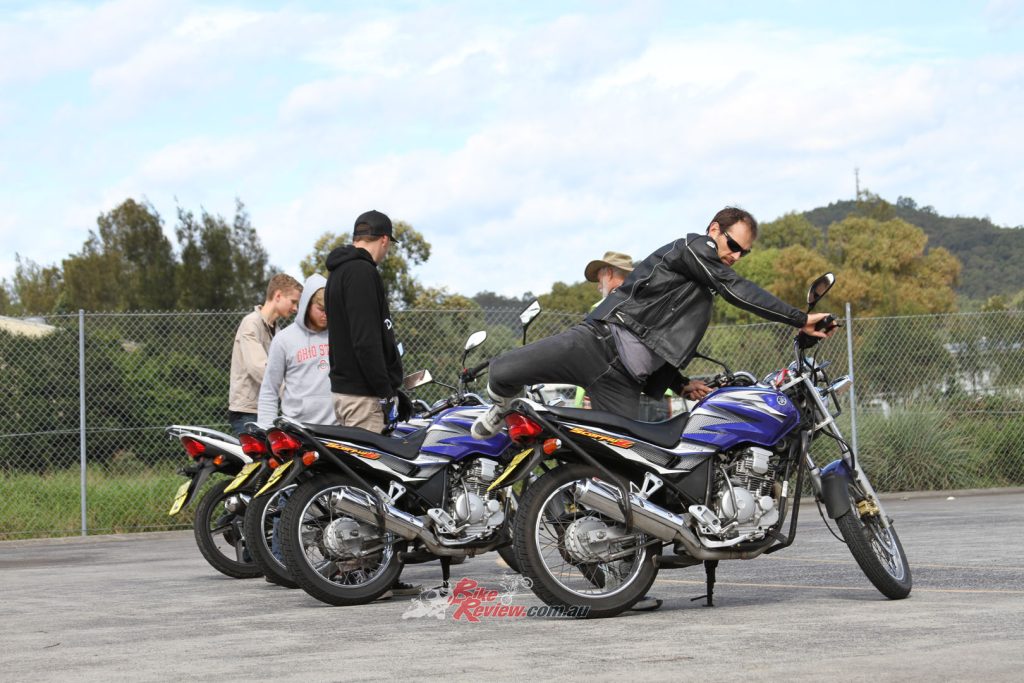
Dave gives us the inside story on doing your pre-Learners course, which is required to go for your Learners licence.
PRE-LEARNER TRAINING IN NSW – Dave Earp
It was long overdue, in a funny kind of way. So many of my friends rode bikes, and I had been shooting photos of them for a number of years it was almost awkward that I didn’t ride. I liked the idea of riding, but just hadn’t got to the tipping point. Then I started a new job. I went from doing the almost two hour rail commute into the city, to needing a vehicle every day for a 15-minute trip to my new work. Winning all round, well, nearly. The only problem was in our family of five, we have one car, and with kids aged two, six and nine, there are plenty of activities that required transportation around the place.
So, reluctantly, my wife agreed that a bike was going to be the most economical way for me to get in to work. So at 37 years old, I looked into it. Booking for the Pre-Learner Rider Training was quite straightforward. I did it online, went through the steps to choose dates that suited me and paid the government subsidised course fee by credit card. Simple.
DAY ONE
I managed to rock up five minutes late to the recommended arrival time to find three fellow trainees all probably 20-years younger. This would be interesting. After reading through a disclaimer and info card giving you some of the safety warnings about riding motorbikes and signing my life away, we got into some theory. Heavy emphasis was placed on wearing the all appropriate safety gear every time you ride. “If you don’t want to wear the gear, don’t ride the bike – walk or take the car.”
Preaching to the converted, buddy. I’m already there. We went through fitting helmets and wearing gloves, boots, and trousers. After the theory, we moved out to the bikes and got familiar with them. Thankfully, we started with the basics. I have had very little to do with bikes, other than photographing them, and was willing to be told everything from the start. From mounting and dismounting, which you would think is a rather simple exercise, there are a couple of details that, if forgotten, could result in injury to you or some nasty damage to the bike.
It’s all about the key steps. Once we had mastered that, we moved on to using the brakes. We rolled forward and backwards stopping with both front and rear brakes. Next, with a little push from the other trainees, we worked on rolling stops over a longer distance. All going well so far.
Then we actually got shown how to start the bikes. It was here, I became more aware of my skill level compared to a couple of the other young guys. Two of them had been riding dirt bikes for years, and so most of this stuff was almost second nature to them. I wasn’t too worried though, I was here to do my thing, and learn to ride a motorbike. Our next exercise was to practice releasing the clutch in first gear and crawling up to the instructor’s position as he stepped back down the course. Then it was throttle up to a fast idle and release the clutch to get a little more pace down the course. Now things were getting a bit more fun. I was taking everything in nicely and things were looking good.
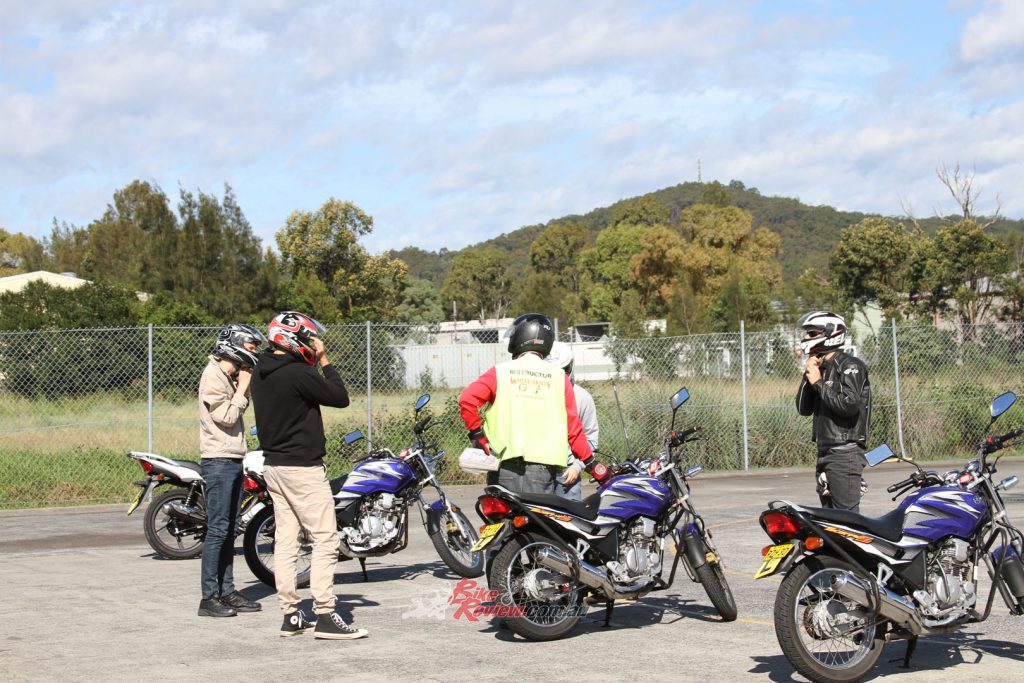
The two day learner course is catered towards people who have never ridden a motorcycle before, so don’t be nervous if you’ve never been on a bike before!
It was about this time that we left the bikes and had a tea break. When we returned and before we started the bikes again, we practiced some cornering with a running push from behind. Once we had all got the looking and leaning sorted, we got in to the more active part of the day. Clockwise and anti-clockwise laps of the small circuit helped get my eye in to riding around bends. Feeling the bike lean and the wheel hug the curve of the guidelines on the track was rather pleasing. I had my moments, when I didn’t lean enough, or ran too slow to get through neatly but on the whole, I was pretty pleased.
The last part of the day was gear changes. Doing the same circuit, we worked on changing down into the corner and changing up out of it. Only into first and second gear, but the training area wasn’t big enough to get any more out of the bike anyway. By the time you had got into second and settled the throttle back, you were clutching in to down change for the corner.
My one complaint about the day was that one of the (experienced) young guys was rather impatient and was clearly itching to get into third and get up more speed. I usually had him on my tail, over-revving and weaving side to side without overtaking – because we’d all been told not to overtake. Usually it was the third young guy who was completely new to riding, and hadn’t driven a manual car either, who we were all catching up to but I found that I still needed to concentrate on my own gear changes or corners, so his pace was sometimes fine for me. Credit to the instructor Brian, he made a point of speaking to him a couple of times to remind him that us everyone needed space to think.
DAY TWO
I managed to get to the course on time on the second day. I’d even done my homework. We had been given a double-sided sheet with questions and ‘fill in the blanks around’ the key steps and other safety info that we went through yesterday. Apparently I hadn’t remembered everything exactly as I should have, but fortunately for me it wasn’t part of the pass/fail criteria. We ran over some of the theory that we learnt yesterday and then got back out on the bikes. I should mention at this point that I had been learning on a Yamaha Scorpio Z, and for a beginner, it was a good bike to start with. We warmed up the bikes with a few laps of shifting up and down as we had been doing the previous day.
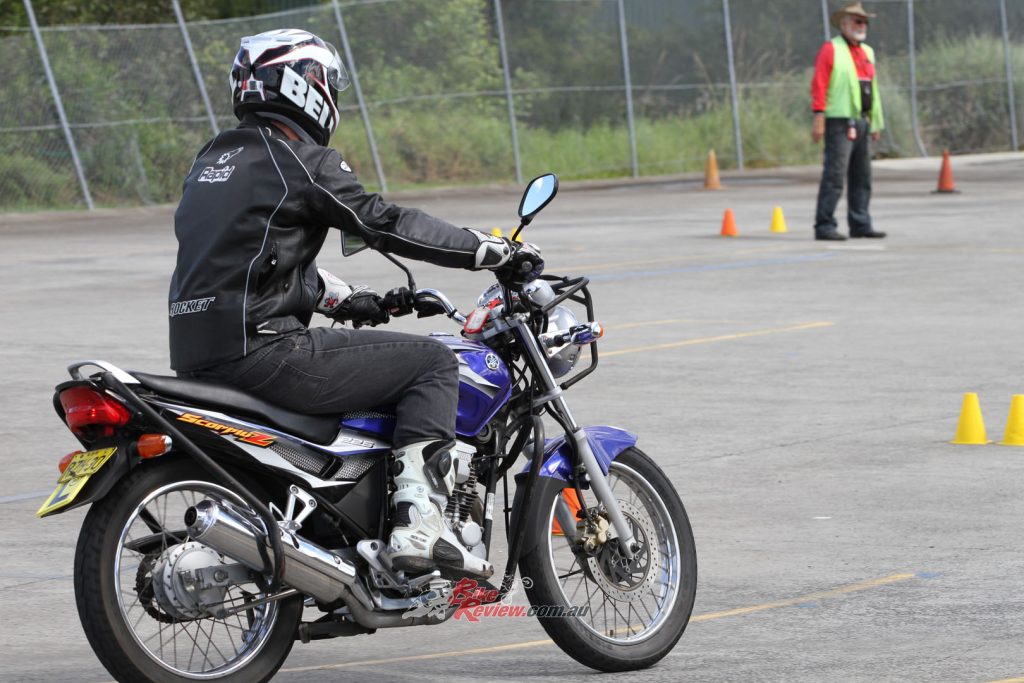
You’ll need to stay on your L’s for at least three months before you get your P’s but you can stay on them for up to a year if needed. Any longer than a year and you’ll have to redo the two day course.
Then came the tricky stuff for me – braking. I’d been OK going around the track and stopping gradually in between exercises when Brian called us in for the next briefing. But practicing emergency stopping was something else. Doing laps and then having to come to an abrupt stop seemed to be rather difficult for me. For someone who has been driving for 20 years, and could stop a manual car in a hurry rather easily, this seemed to be surprisingly difficult. I eventually got the hang of it, and was pulling up at the imaginary stop sign, albeit sometimes awkwardly.
The next exercise brought us closer to the real world with a few simulated traffic scenarios. We ran two laps of the track with different events each lap. First there was a ‘give-way’ merging lane and sometimes with four bikes on the track you actually had to give way.
Then on the second lap, there was a left hand turn with a crawl across to the other side where you had a stop sign and another left turn back on to the track. We had the added complication of using our indicators for the first time in this exercise and so often with everything else going through my brain, I’d forget to turn them off. Brian would be calling out to each of us at different times to switch them off. So much to remember!
I found in this exercise the importance of looking and anticipating other rider’s movements. With each of us concentrating on our own bikes, sometimes someone might ride right through the give way, or perhaps pull out from the stop sign without looking. I was grateful that my years of driving experience helped me read the other riders and I backed off at times where I would have been in the right to just keep going.
Brian’s emphasis throughout the two days was that you as a rider have to be on top of your game every time you ride. Watching in front and behind you constantly and positioning yourself in the lane or the corner to give you the maximum chance of staying safe were repeated. I got the message.

“Brian’s emphasis throughout the two days was that you as a rider have to be on top of your game every time you ride.”
Even after we had brought the bikes back in, there was still another session of theory where we cemented some of those points and brought the exercises we did into real life examples. Finally we were presented with our certificates of completion and run through the legal requirements of the next few steps for us all. As a rider over 25, I’m grateful that I don’t need to run on Ls for as long as those young fellas. I have lots of practice to do to get more comfortable with the bike though.
Before that, I have three months to sit the Driver Knowledge Test for motorcycles at the RMS otherwise I’ll be back here for another Pre-Learner Rider Training and test. I’m off to book it online now.
Editor’s Note: If you are reading this article on any website other than BikeReview.com.au, please report it to BikeReview via our contact page, as it has been stolen or re-published without authority.


